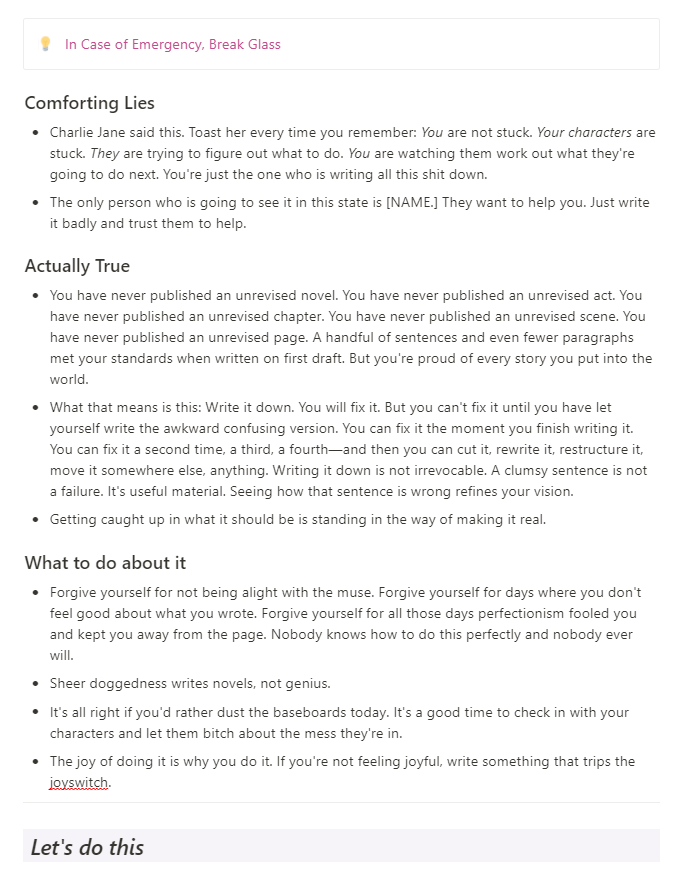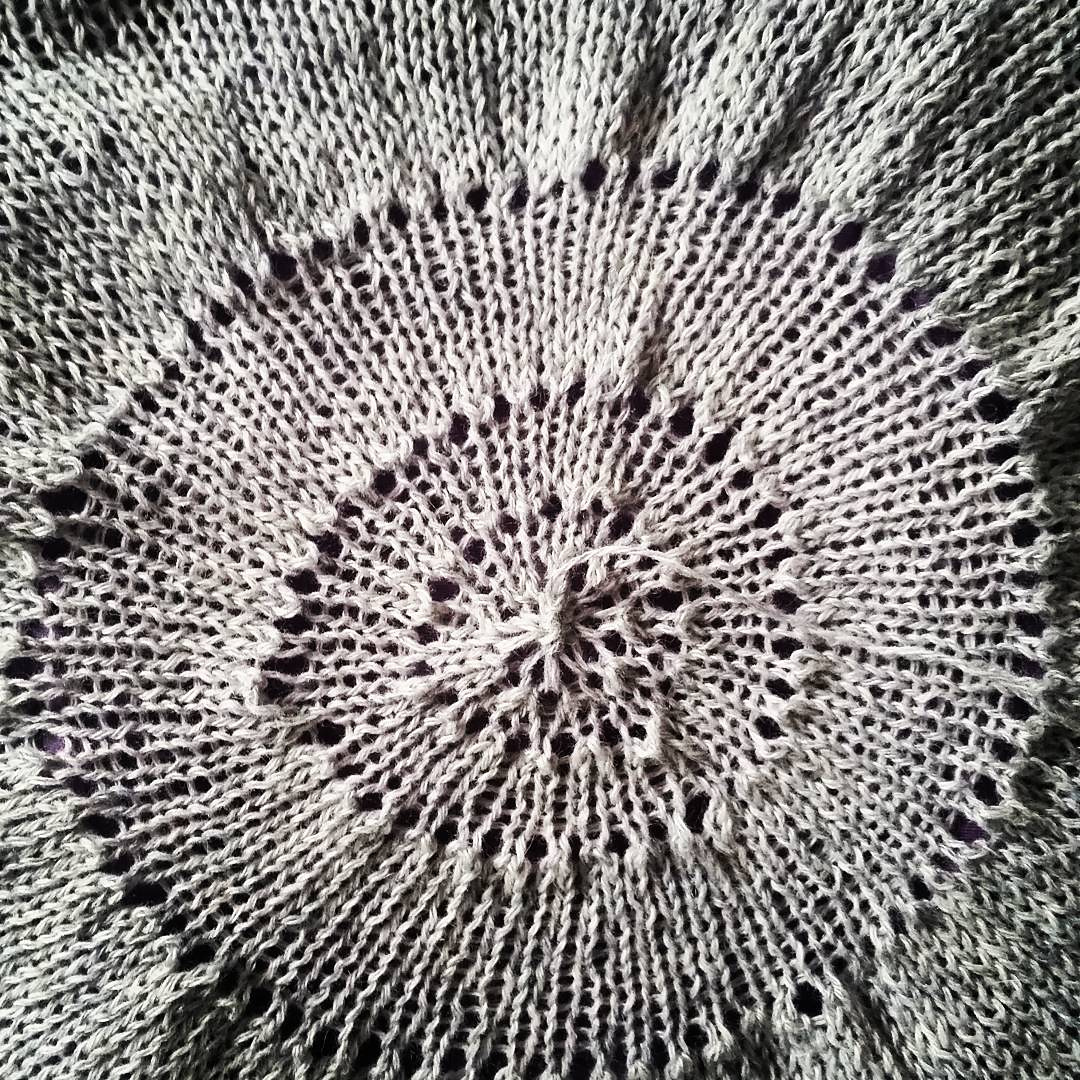I originally posted this on Twitter.

In Case of Emergency, Break Glass
Comforting Lies
• Charlie Jane said this. Toast her every time you remember: You are not stuck. Your characters are stuck. They are trying to figure out what to do. You are watching them work out what they’re going to do next. You’re just the one who is writing all this shit down.
• The only person who is going to see it in this state is [NAME.] They want to help you. Just write it badly and trust them to help.
Actually True
• You have never published an unrevised novel. You have never published an unrevised act. You have never published an unrevised chapter. You have never published an unrevised scene. You have never published an unrevised page. A handful of sentences and even fewer paragraphs met your standards when written on first draft. But you’re proud of every story you put into the world.
• What that means is this: Write it down. You will fix it. But you can’t fix it until you have let yourself write the awkward confusing version. You can fix it the moment you finish writing it. You can fix it a second time, a third, a fourth-and then you can cut it, rewrite it, restructure it, move it somewhere else, anything. Writing it down is not irrevocable. A clumsy sentence is not a failure. It’s useful material. Seeing how that sentence is wrong refines your vision.
• Getting caught up in what it should be is standing in the way of making it real.
What to do about it
• Forgive yourself for not being alight with the muse. Forgive yourself for days where you don’t feel good about what you wrote. Forgive yourself for all those days perfectionism fooled you and kept you away from the page. Nobody knows how to do this perfectly and nobody ever will.
• Sheer doggedness writes novels, not genius.
• It’s all right if you’d rather dust the baseboards today. It’s a good time to check in with your characters and let them bitch about the mess they’re in.
• The joy of doing it is why you do it. If you’re not feeling joyful, write something that trips the joyswitch.
Let’s do this.
/
It’s been a long time since I published a craft blog post, but I haven’t quit talking about craft. I made a Patreon account, and I have posts there about things like
a synopsis writing guide that will help expose structural manuscript problems
how to evaluate a scene to make sure it’s doing the right things
how to build a story when all you have is a character
I do a new writing related post every month, available to patrons on a sliding scale basis – pick the level of patronage you can afford and you’re in!
Starting in August I am starting a Live Sessions tier, where I will explore a subject about the craft and business of writing on zoom, where you can ask more questions. Look for it then!

